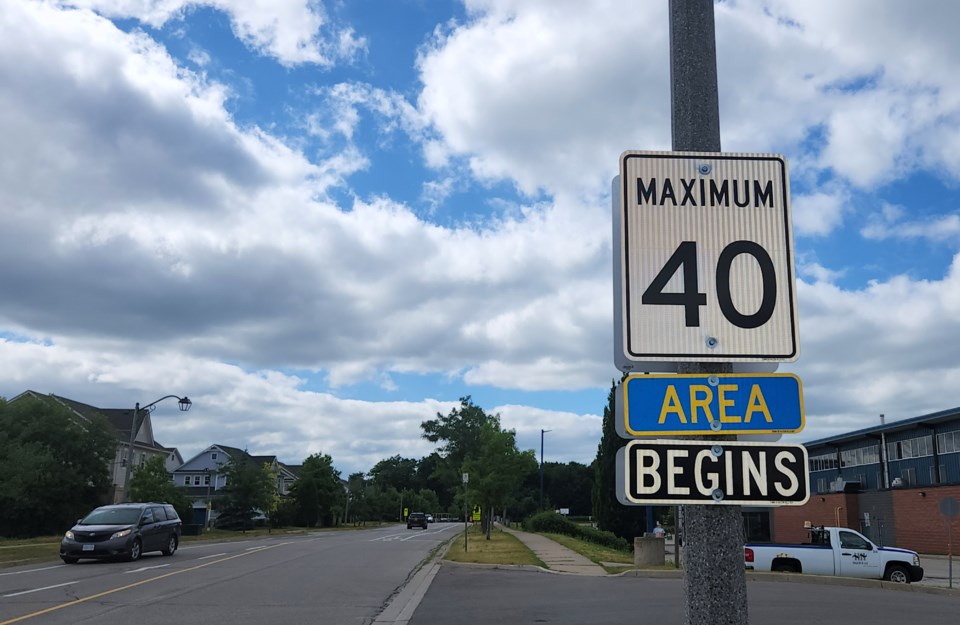Local residents can expect to see speed limits lowered on more Halton Hills streets now that town council has approved a 40 km/h neighbourhood speed limit policy.
The guideline will be used to assess local roads and determine where speed limits should be reduced, in conjunction with traffic calming measures.
Following council's July 4 policy endorsement, staff will soon begin analyzing the town's road system to identify local and collector roads that qualify for such a speed limit reduction.
A report on implementing the lower speed limits is expected back at council early next year, with staff indicating that the changes will be rolled out over the course of several years.
The policy was spurred by a pilot project that reduced the speed limits on specific roads down to 40 km/hr, with mixed results.
“The 40 km/h speed limit pilot confirmed that reducing the posted speed limit with signs alone is not effective in reducing operating speeds on all roadways,” stated a report to council from Roumen Kotev, Town traffic co-ordinator (road safety).
“Future consideration for 40 km/h posted speed limits on roadways and neighbourhoods should be assessed on an individual basis in combination with traffic calming measures where appropriate.”
Councilor Jane Fogal, who called for the pilot project, said one of the biggest complaints councillors receive is about speeding on local streets.
"It’s a big concern for people, where they feel quite rightly that the default of 50 km/hr is too fast in their neighbhourhoods,” she said.
The pilot reduced speed limits down to 40 km/hr on the following areas:
Cobblehill Road neighbourhood
The area of Barber Drive
Belmont Boulevard neighbourhood
Delrex Boulevard between Edward Street and Rexway Drive
Tanners Drive area in Acton
The study found that operating speeds in some of these chosen spots were largely unaffected by the inclusion of the 40 km/hr speed limit signs. In the Cobblehill area, operating speeds remained unchanged at around 55 km/hr. Same went for the Barber Drive neighbourhood, where operating speeds remained at 53 km/hr.
The others did show slower speeds, which staff attributed to a combination of lower speed limits and other measures such as flexible bollards - - tall, thin sticks bolted to the ground, which are often seen as barriers protecting cyclist lanes.
“Signs alone do not do this (reduce speeds),” Manager of Transportation Maureen Van Ravens said. “The one thing we did learn, though, in some areas there are no speeding issues. When you put the signs in at 40 km/hr, people respect the area more on the local roads and that was a good news story."



